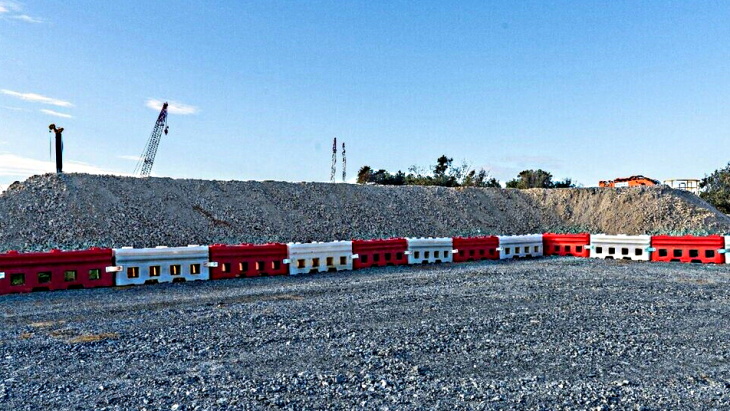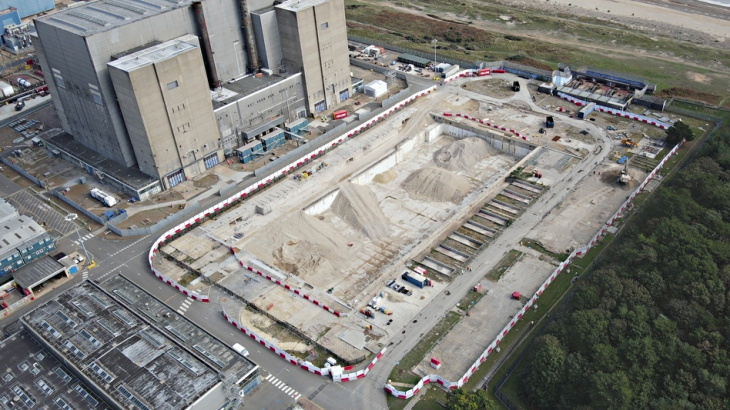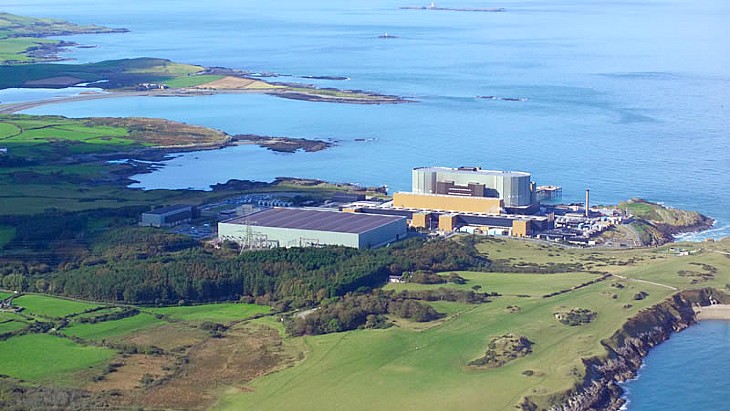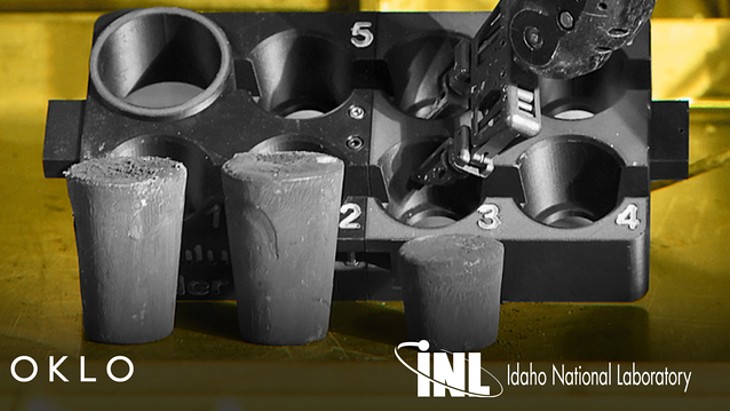The demolition of the turbine hall and adjoining structures at Sizewell A was completed in June by UK Nuclear Decommissioning Authority subsidiary Nuclear Restoration Services (NRS). The football-pitch-sized turbine hall was razed to the ground using a series of "innovative and forward-thinking techniques" which meant the completed work was achieved in a significantly quicker timeframe than if traditional decommissioning and dismantling approaches had been followed, the company said. Up to 700 kgs of explosives were used last November to weaken the four reinforced concrete plinths on which two 65-tonne turbogenerators stood.
More than 17,000 tonnes of concrete and rubble were removed from the turbine hall, fire station and electrical annexe structures at Sizewell A. This waste has been crushed, processed and reused for ongoing construction projects. About 35 miles of cable have also been removed. A scrap metal contract has raised income from the sale of the 11,000 tonnes removed during the de-plant and demolition phases. This revenue will be used to offset decommissioning costs.
Under an innovative circular economy agreement between NRS and Sizewell C, more than 15,000 tonnes of the crushed concrete from the turbine alternator plinths will be reused at Sizewell C.
Since September, Sizewell A has been carrying out the crushing, testing, and certification of the concrete to ensure it meets the WRAP (Waste and Resources Action Programme) Quality Protocol. Once certified, all the material has now been transported to Sizewell C's main construction area as recycled aggregate. The recycled concrete is planned to be used in the sub-bases for various foundation platforms at the new plant.

The reusable aggregate pile at Sizewell C (Image: NRS)
"This landmark collaboration significantly reduces shared costs and carbon emissions, and the need for newly mined aggregates," NRS said.
"This is another example of how Sizewell C is working with local projects to maximise benefits, not just for us, but for the local community," said Damian Leydon, Site Delivery Director, Sizewell C. "By reusing this material, we're reducing the number of trucks transporting aggregate through East Suffolk, while further reaffirming our commitment of minimising our environmental impact during construction. This is great news all round."
Wendy Heath, NRS Senior Project Manager at Sizewell, added: "This innovative approach has prevented 28 tonnes of CO₂ emissions by diverting waste from landfill, completing the circular economy for this material. This marks a first-of-its-kind achievement for NRS and showcases how collaborative working is enabling sustainable decommissioning. By reducing waste and minimising traffic on local roads, we're actively supporting the future of clean energy. It's a clear demonstration of NRS values in action - placing safety, sustainability, and community impact at the heart of everything we do."
Sizewell A's two 210 MWe Magnox gas-cooled reactors operated from 1966 until 2006. Defuelling began in 2009, with fuel removed from the reactors placed in the site's used fuel storage ponds before being packaged in transport containers for shipment to the Sellafield complex for reprocessing. The final flask of fuel was shipped to Sellafield in August 2014. Sizewell A was declared completely fuel-free in February 2015. The decommissioning milestone marked the removal of 99% of the radioactive hazard from the former Magnox nuclear power station. Planning consent was given to demolish the turbine hall and electrical annexe in August last year. The empty land that now lies where the flattened turbine hall once stood will eventually be restored and released for re-use. The whole site Sizewell A site is expected to be completely cleared by 2077.
The Sizewell C plant will feature two EPR reactors producing 3.2 GW of electricity, enough to power the equivalent of around six million homes for at least 60 years. It would be a similar design to the two-unit plant being built at Hinkley Point C in Somerset, with the aim of building it more quickly and at lower cost as a result of the experience gained from what is the first new nuclear construction project in the UK for about three decades. A final investment decision for the Sizewell C project was taken in July this year.





_50545.jpg)
_40405.jpg)


_76087_55556.jpg)




